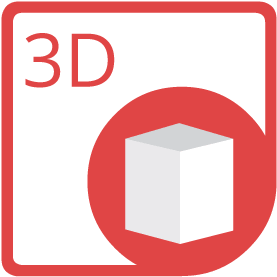
Convert JT to PDF via Java
JT to PDF conversion using Java library without any 3D modeling software.
How to Convert JT to PDF Using Java
In order to render JT to PDF, we’ll use
API which is a feature-rich, powerful and easy to use conversion API for Java platform. You can download its latest version directly from
and install it within your Maven-based project by adding the following configurations to the pom.xml.
Repository
<repository>
<id>AsposeJavaAPI</id>
<name>Aspose Java API</name>
<url>https://repository.aspose.com/repo/</url>
</repository>
Dependency
<dependency>
<groupId>com.aspose</groupId>
<artifactId>aspose-3d</artifactId>
<version>version of aspose-3d API</version>
<classifier>jdk17</classifier>
</dependency>
Steps to Convert JT to PDF via Java
Java programmers can easily convert JT file to PDF in just a few lines of code.
- Load JT file via the constructor of Scene class
- Create an instance of PdfSaveOptions
- Set PDF specific properties for advanced conversion
- Call Scene.save method
- Pass the output path with PDF file extension & object of PdfSaveOptions
System Requirements
Before running the Java conversion code, make sure that you have the following prerequisites.
- Microsoft Windows or a compatible OS with Java Runtime Environment for JSP/JSF Application and Desktop Applications.
- Get latest version of Aspose.3D for Java directly from Maven.
Java 3D Scene Manipulation Library
Aspose.3D is a CAD and Gameware API to load, modify and convert 3D files. API is a standalone and does not require any any 3D modeling or rendering software. One can easily use API for Discreet3DS, WavefrontOBJ, STL (ASCII, Binary), Universal3D, FBX (ASCII, Binary), Collada, glTF, PLY, GLB, DirectX and more formats.JT What is JT File Format?
JT (Jupiter Tessellation) is an efficient, industry-focused and flexible ISO-standardized 3D data format developed by Siemens PLM Software. Mechanical CAD domains of Aerospace, automotive industry, and Heavy Equipment use JT as their most leading 3D visualization format. JT format is a scene graph that supports the attributes and nodes that are CAD specific. Sophisticated compression techniques are used to store facet data (triangles). This format is structured to support visual attributes, product and manufacturing information (PMI), and Metadata. There is a good support for asynchronous streaming of content. In heavy mechanical industry, professionals use JT file in their CAD solutions and product lifecycle management (PLM) software programs to examine the geometry of complicated goods.
Read MorePDF What is PDF File Format?
Portable Document Format (PDF) is a type of document created by Adobe back in 1990s. The purpose of this file format was to introduce a standard for representation of documents and other reference material in a format that is independent of application software, hardware as well as Operating System. PDF files can be opened in Adobe Acrobat Reader/Writer as well in most modern browsers like Chrome, Safari, Firefox via extensions/plug-ins. Most of the commercially available software suites also offer conversion of their documents to PDF file format without the requirement of any additional software component. Thus, PDF file format has full capability to contain information like text, images, hyperlinks, form-fields, rich media, digital signatures, attachments, metadata, Geospatial features and 3D objects in it that can become as part of source document.
Read MoreOther Supported Conversions
You can also convert JT into many other file formats including few listed below.